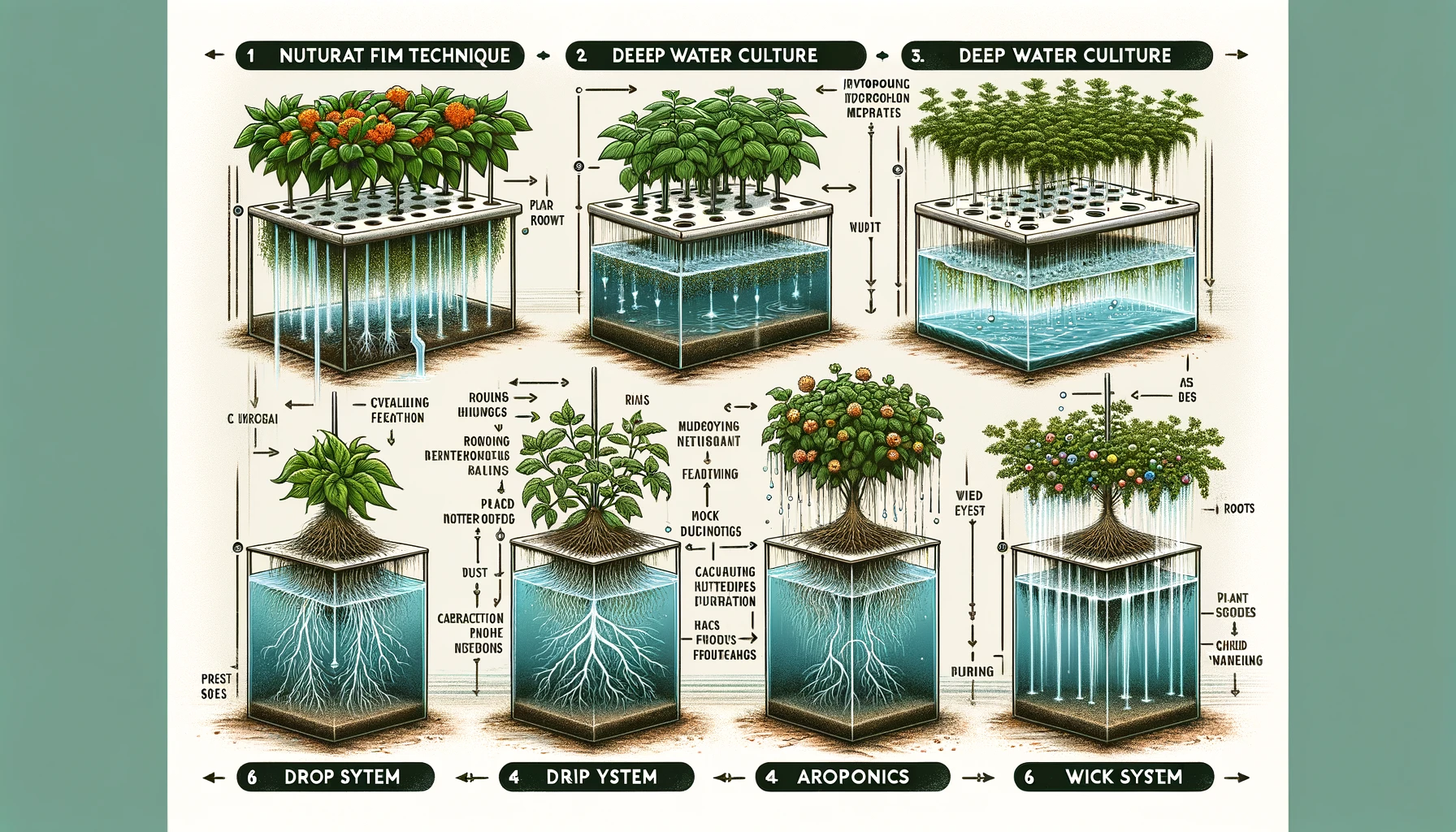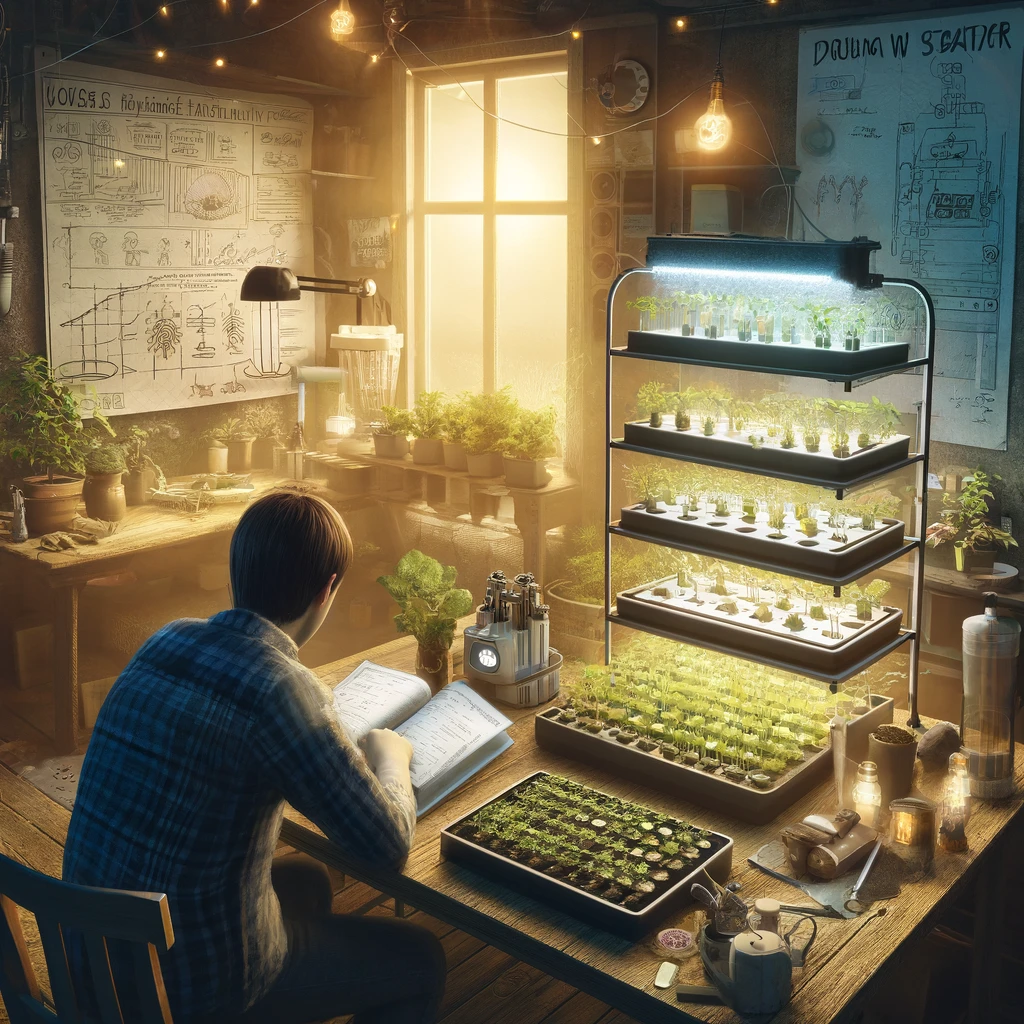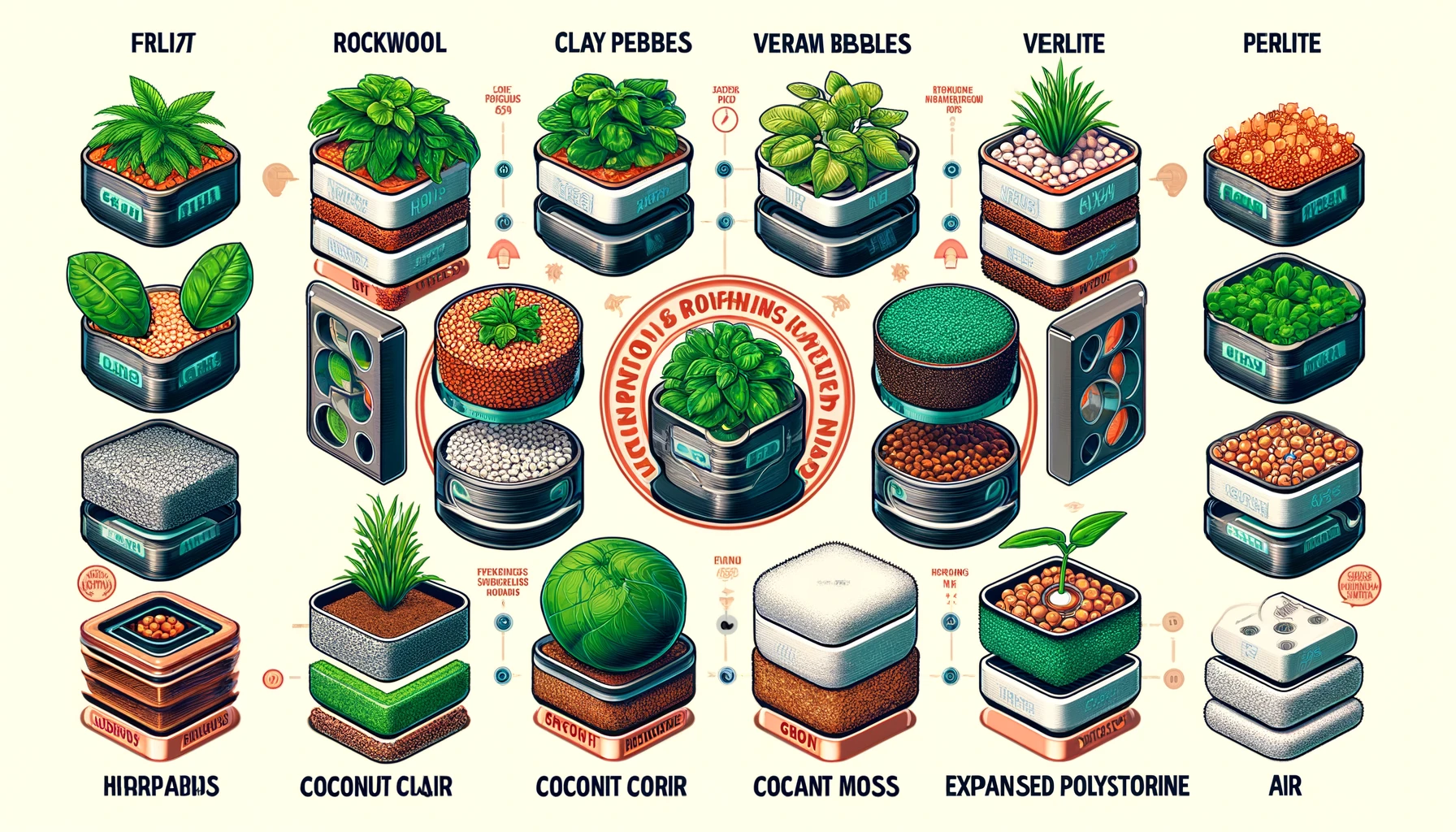Hydroponic gardening involves growing plants in a soil-less environment, where nutrients are delivered directly to their roots via a water-based solution. Here’s a summary of various hydroponic methods:
- Nutrient Film Technique (NFT): In NFT systems, plants are grown in channels through which a thin film of nutrient solution continuously flows. The roots are partially submerged, allowing them to absorb nutrients while also accessing oxygen.
- Deep Water Culture (DWC): This method involves suspending plants above a reservoir of nutrient-rich water, allowing the roots to dangle directly into the solution. Air pumps are often used to oxygenate the water, promoting healthy root growth.
- Ebb and Flow (Flood and Drain): Ebb and Flow systems periodically flood the plant roots with nutrient solution before draining it back into the reservoir. This method ensures that roots get nutrients and air regularly.
- Drip System: A drip system delivers nutrient solution to the base of each plant through a small drip line. This allows for precise control of water and nutrient application.
- Aeroponics: In aeroponic systems, plant roots hang in the air and are misted with nutrient solution at regular intervals. This method provides excellent oxygen exposure and nutrient delivery.
- Wick System: The simplest form of hydroponics, wick systems use capillary action to draw nutrient solution from a reservoir to the plants through a wick.



